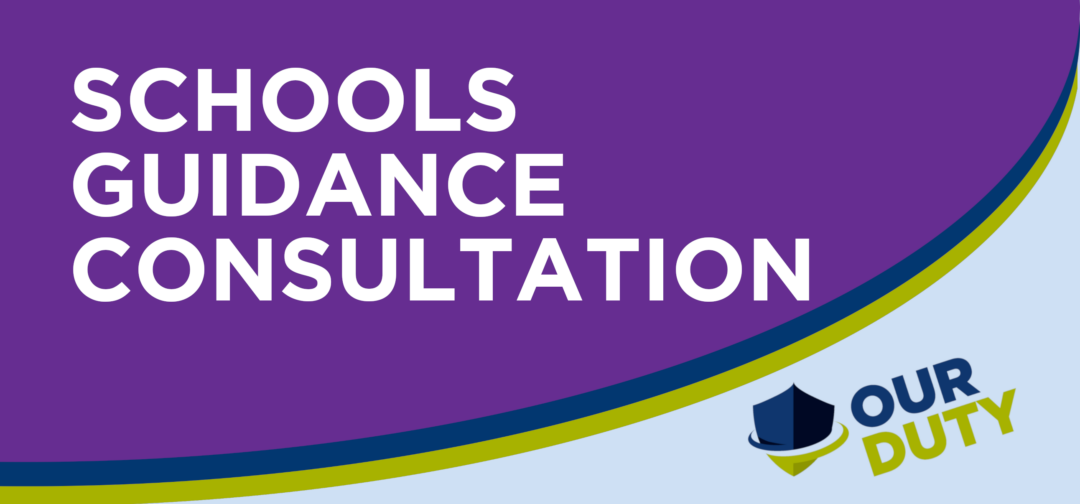The UK Government consultation on the draft Guidance for Schools and Colleges: Gender Questioning Children was published on 19th December 2023.
The consultation runs until 12th March 2024
We shall be making a submission in response to the consultation in due course, using our Universal Guidance as the benchmark.
The Government has published two documents to support this consultation. There is the Draft Guidance, and there is a Consultation Guide which describes the consultation process and provides 42 questions as a framework for responses and submissions.
Initial Response
The most significant problem with the published guidance is that it is not statutory. This means that schools, and activist teachers in particular, can and will ignore it.
One positive: “We have not used the term transgender to describe children.“
Kemi Badenoch MP, Minister for Women and Equalities, said: “This guidance is intended to give teachers and school leaders greater confidence when dealing with an issue that has been hijacked by activists misrepresenting the law.”
The Guidance gets off to a good start, in the Foreword, by recognising that the phenomenon of adolescents questioning their sex is “linked to gender identity ideology, the belief that a person can have a ‘gender’ that is different to their biological sex.” This official recognition that gender identity ideology exists and is a key contributor to the problem is welcome.
The Foreword continues to set out the five principles upon which the guidance has been based:
- Schools and colleges have statutory duties to safeguard and promote the welfare
of all children. - Schools and colleges should be respectful and tolerant places where bullying is
never tolerated. - Parents should not be excluded from decisions taken by a school or college
relating to requests for a child to ‘socially transition’. - Schools and colleges have specific legal duties that are framed by a child’s
biological sex. - There is no general duty to allow a child to ‘social transition’.
These principles are not controversial and provide a sensible basis for the guidance.
These principles are expanded upon in Section 3 – Overarching principles and importantly, it is recognised that a child’s best interests might not be the same as that child’s wishes. This is a crucial point (and one which needs to be incorporated in the medical protocols, too). It can be best summed up by the statement “what they want is not the same as what they need”.
The need to communicate with parents as ‘a matter of priority’ is set out and exceptions to this rule, where involving parents would constitute a significant risk of harm to the child, are described as being ‘exceptionally rare’. What might constitute such a circumstance probably needs more detailed description to prevent this being used as a loophole.
The sentence “While legislation exists that allows adults to go through a process to
change their legal sex, children’s legal sex is always the same as their biological sex.” is problematic in that is creates a distinction between ‘legal and ‘biological’ sex. There is only sex (one might seek to describe it as phenotypic, karyotypic, or genotypic, but that is outside the scope of this guidance and consultation). The confusion is created by the existence of the Gender Recognition Act 2004 which sought to obfuscate the difference between sex and behaviour.
The “official line” on social affirmation is still that as described by Dr Hilary Cass in her Interim Review, i.e. that it is “not a neutral act”. Work is required to improve Government understanding of social affirmation as part of the Lifecycle of Transgender Ideation such that there is official acceptance that social affirmation is, in fact, positively dangerous.
It is our view that a complete, statutory, ban on social affirmation in schools is necessary.
Section 4 – Language and Terminology includes definitions. The one for “gender identity” is worth reproducing:
Gender identity: is a contested belief. It is a sense a person may have of their own gender, whether male, female or another category such as non-binary. This may or may not be the same as their biological sex. Many people do not consider that they or others have a gender identity at all.
It must be pointed out that promotion of ‘gender identity’ as if it were fact is prohibited by S406 of the Education Act 1996 which forbids political indoctrination.
The definition for social affirmation contains the same problem as previously described.
A significant ‘red flag’ appears in Section 5 – Responding to Requests and Engaging Parents:
“There could be instances where children disclose first to their teachers that they may be questioning their gender. If there is no change being requested, teachers can listen respectfully about a child’s feelings without automatically alerting parents, but, for safeguarding reasons, cannot promise confidentiality.”
If a child discloses that they are ‘questioning their gender’ then they have transgender ideation. This in itself is an indication of a grave safeguarding failure that could have catastrophic consequences. It is entirely inappropriate that ‘questioning gender’ is treated in such a trivial manner. As a rule, parents must be involved immediately, and an appropriate safeguarding investigation launched.
The first step in the guidance is:
Allow for watchful waiting: Wait for a period of time before considering a
request, to ensure it is a sustained and properly thought through decision. This
period of ‘watchful waiting’ may help to ensure unnecessary action is not
undertaken.
Allowing for watchful waiting when parents have not been informed risks cementing the transgender ideation through rumination. The best results in achieving desistance from transgender ideation are achieved when Early Intervention is most suitable. There is only a short window the problem can be ‘nipped in the bud’. And it would be a dereliction of duty to miss this opportunity if ‘watchful waiting‘ occurs before parental involvement. Watchful waiting is, in these circumstances, a clinical intervention that schools are not qualified to prescribe.
While the importance of the role of parents is made clear in the guidance, it would have been better if parents’ rights and duties were elevated to be front and centre.
Section 6 – Handling Different Information and Requests gets into the detail, and we will not address that in this initial response. We shall be publishing a fuller response as part of the consultation process in due course.
Keith Jordan, spokesperson for Our Duty, said:
This guidance was due out in the year of our founding, 2018, and it seems to be based on what we all knew about the problem of children claiming a transgender identity back then. While the guidance makes reference to the best interests of the child, it seems to miss recognising that it is never in a child’s best interests to think of themselves as transgender. Real concern for safeguarding would recognise the dangers inherent in such ideation, and would seek to prevent it. The section on ‘watchful waiting’ seems muddled and out of sequence. The overriding impression that we are left with is that of a paper that confirms it is the governments’ policy and practice to partially close the stable door long after the horse has bolted.

